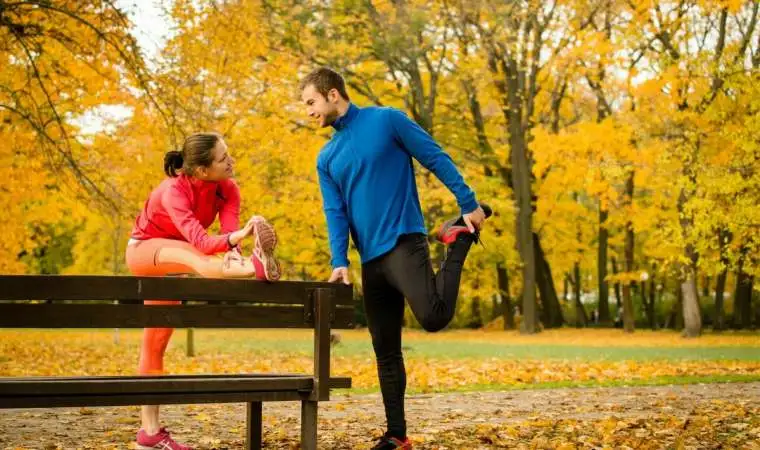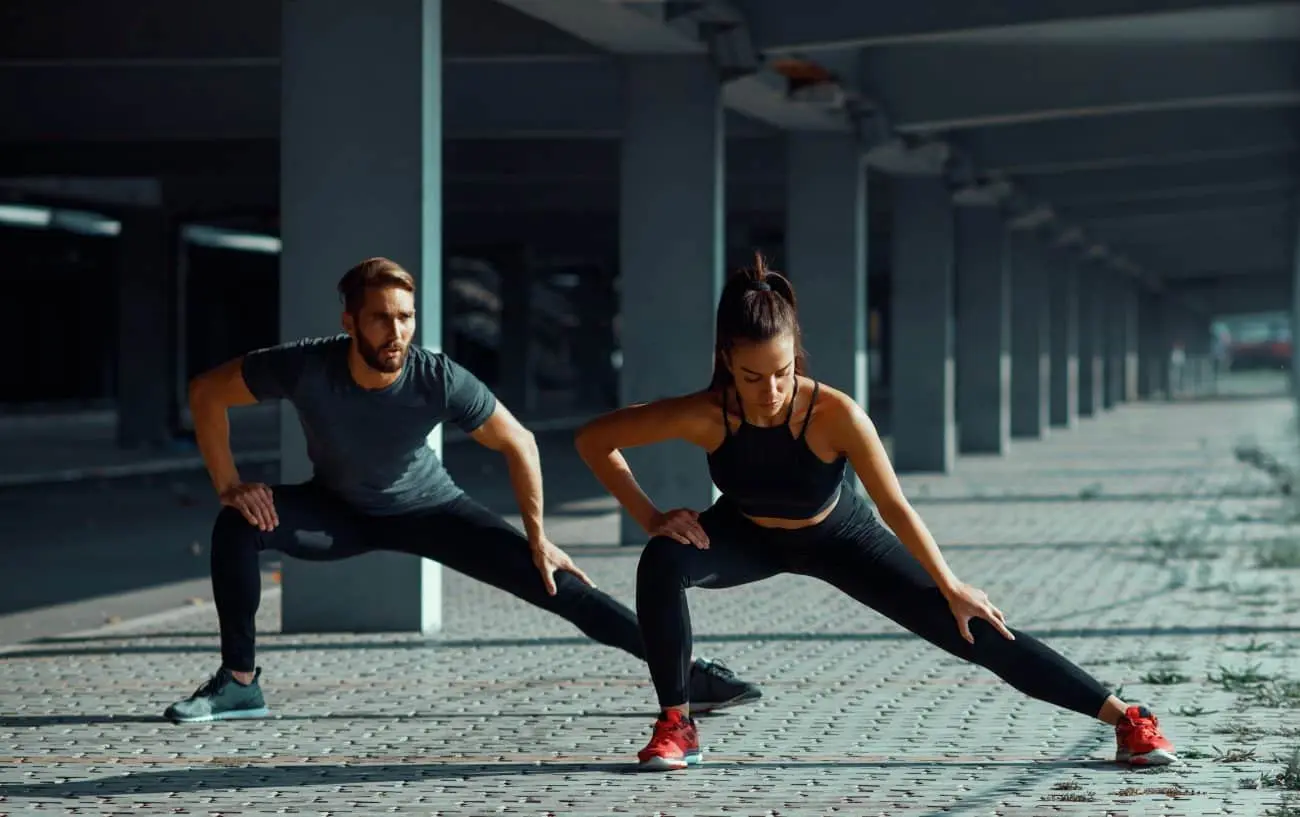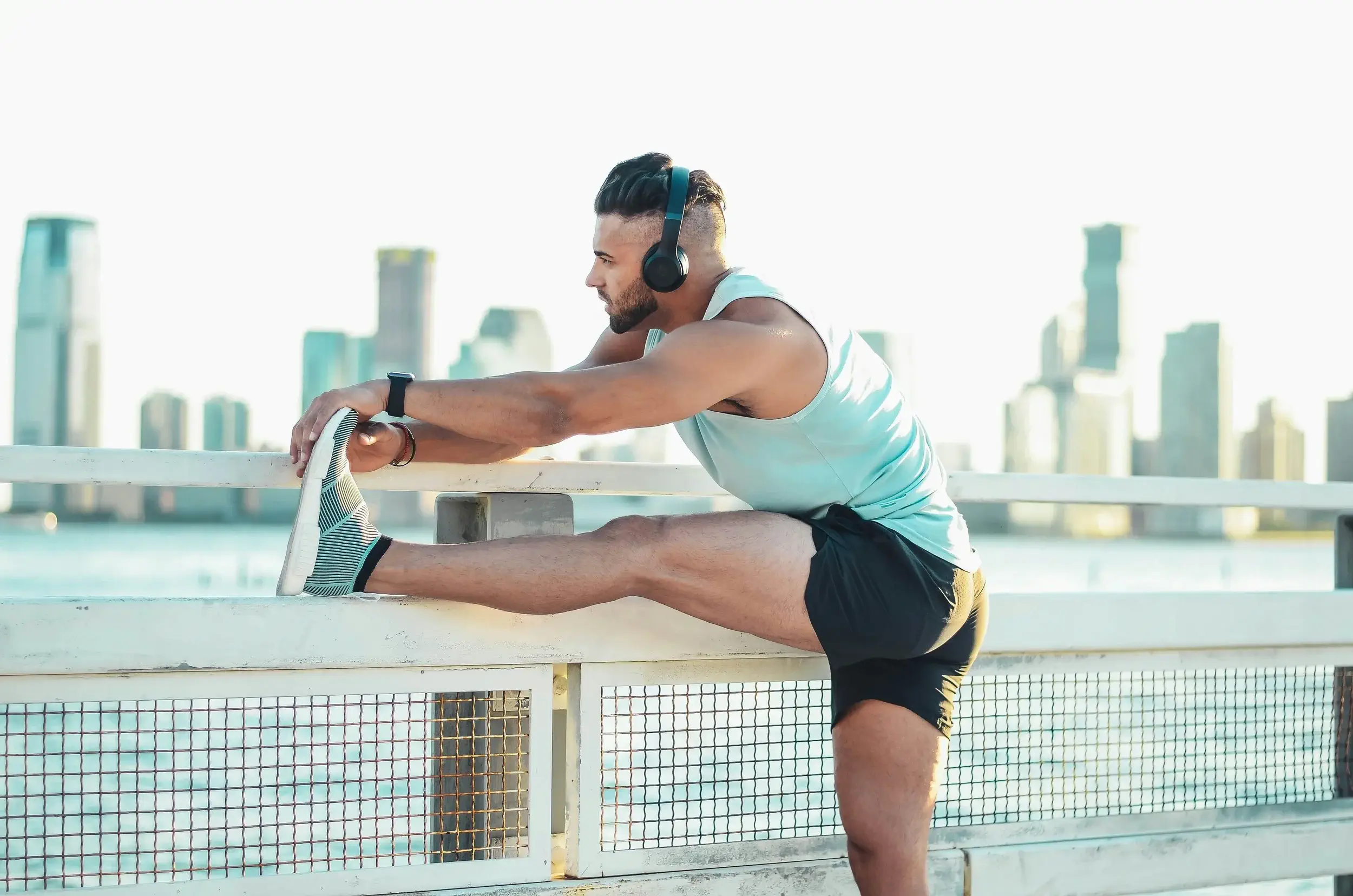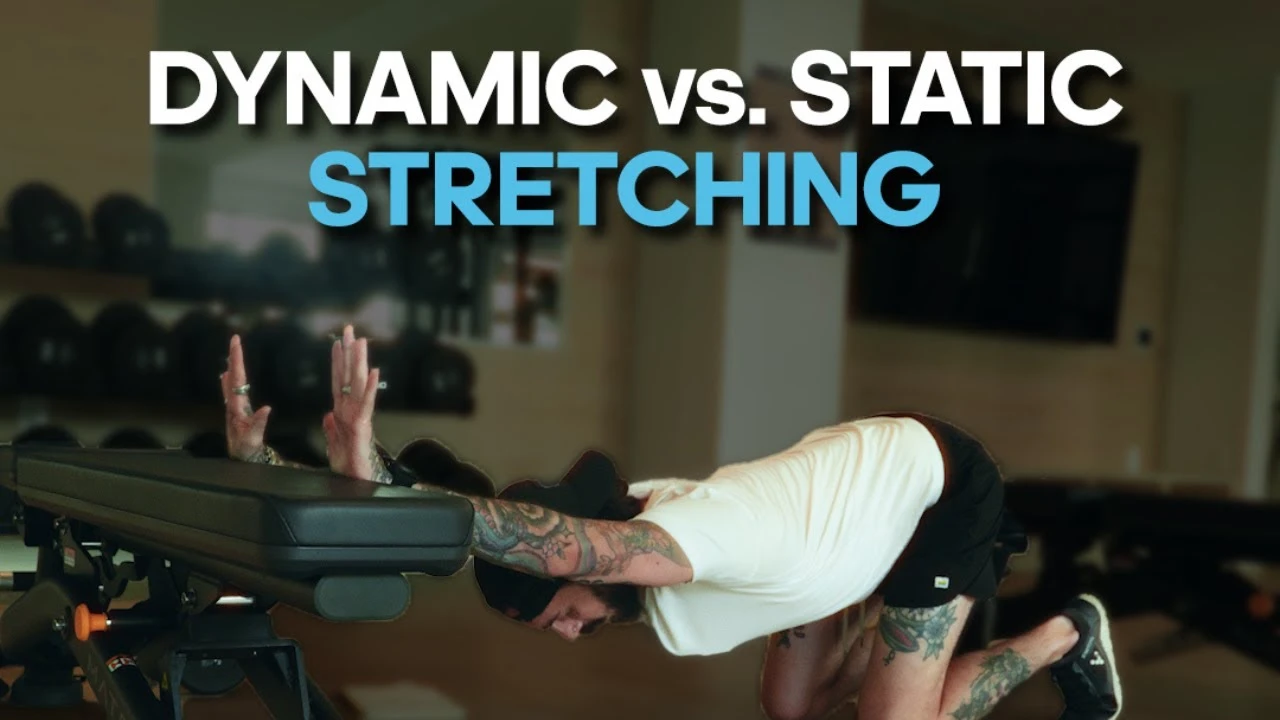
Dynamic and Static Stretching Exercises: Which is Better?
Stretching is an important part of the training of professional and non-professional athletes. But did you know that we have two types of stretching (static and dynamic stretching exercises)? Which do you think is better and more useful?
Stretching exercises increase the athlete’s flexibility by stretching and warming up soft tissues such as muscles and ligaments, making him perform better during the training session and the likelihood of injury and injury is much lower. For example, quad stretches for seniors have many benefits for these people. In this article from Human Health Mag, we are going to tell you everything about dynamic and static stretching exercises. So stay with us until the end of this article.
What is Dynamic Stretching?
First of all, let’s get acquainted with dynamic stretching exercises. Dynamic stretching exercises are active movements in which joints and muscles move through their full range of motion. These movements are often used to warm up the body before exercise. Dynamic stretching exercises can be similar to functional movements and prepare the body for the exercises you have ahead. For example, a runner does knee-high movements before running, which is dynamic stretching (for him).
For example, knee strengthening exercises for seniors can fall into this category. You can do stretching exercises or sit on the floor and bring your feet together. Then open your knees completely so that the outer part of your thighs touches the floor. Pull your heels towards your body as far as you can. Move your knees like a butterfly flapping its wings to stretch your groin. These movements are very useful for older people.

Benefits of Dynamic Stretching
Dynamic and static stretching exercises are both necessary and beneficial. Dynamic stretching is very beneficial for cardio athletes (such as running or swimming). Research shows that if you add dynamic stretching to your warm-up routine, you can improve your athletic performance and prevent injury.
This is because dynamic stretching activates your nervous system and muscles, increases flexibility and balance. In general, performing dynamic stretching has the following benefits:
- Improves flexibility and balance: Muscle weakness and inflexibility are two common causes of sports injuries and falls during exercise. Like flexibility exercises for seniors over 70, dynamic stretching can prevent injuries in sports and everyday activities by strengthening the muscles around the joints and increasing their range of motion.
- Improve muscle performance: Dynamic stretching increases blood flow to the muscles and raises heart rate and body temperature. These things make your speed and even muscle strength during exercise much higher and you have better performance on the field.
- Prepare mentally for the main workout: Dynamic stretching familiarizes you with the type of workout by simulating the movements you will have in your session and makes you more mentally prepared. The main point of the specialization of dynamic stretching is precisely this, that these movements are different for each sport, for example, the dynamic stretching movements of a swimmer are completely different from the dynamic stretching movements of a wrestler.
What is Static Stretching Exercise?
The term static stretching (or static stretching) refers to any stretching exercise that is performed without moving and in a stationary position. In other words, a person gets into a stretched position and, after feeling the muscle stretch, stays in that position for a certain amount of time. Static stretching is a very safe and effective form of stretching with a low risk of injury. Therefore, it is a good choice for beginners and those who are inactive.
For example, when performing standing quadriceps stretches, you bend one knee, lift your leg off the ground, grab the lifted leg with your opposite hand and pull your heel toward your buttock, and hold the position until you feel a good stretch. This is an effective way to maintain and improve range of motion.

Benefits of Static Stretching
In general, both dynamic and static stretching exercises have many benefits for everyone, even the elderly. Static stretching is the movement that you do at the end of a workout by holding your muscles in a stretched position; if done correctly and at the right time, these movements have many benefits for you, including:
- Greater flexibility and range of motion: Stretching at the end of a workout, when your muscles have been well-trained, can help increase the range of motion of your joints, muscles, and tendons. Having greater flexibility and range of motion is essential for moving more easily and safely, and of course it also helps make your daily movements easier.
- Reduced pain and stiffness: Having tight, tight, or tight muscles (from overtraining) can be a pain and discomfort, but luckily, static stretching is an effective way to reduce muscle stiffness because stretching helps to relax (release the tightness) and can even reduce mental tension and anxiety when done in a mindful practice like yoga exercises for seniors.
- Increased blood flow: A 2018 study on animals showed that daily static stretching also improves blood circulation. Increased blood flow helps to heal and recover faster after exercise.
Examples of Dynamic and Static Stretching Exercises
In this section, we introduce some examples of dynamic and static stretching exercises:
Examples of dynamic stretching exercises: There are many stretching movements that are considered “dynamic”, and each athlete should choose the appropriate movements and engage the muscles they want, according to their physical condition, goal and need. Dynamic movements include:
- Arm rotations
- Hip joint rotations
- Walking lunges
- Butterfly
- Rope jumping
- Knee high
Examples of static stretching exercises: Both dynamic and static stretching movements are necessary during training. Above, we gave examples of dynamic stretching movements. Now, we will introduce some common static movements:
- Hamstring stretch
- Quadriceps stretch
- Reaching the arms back and opening the chest muscles
- Opening the legs in a seated position (butterfly movement)

Which is Better: Dynamic or Static Stretching?
Given the numerous benefits of dynamic and static stretching exercises, neither is superior to the other; both have their own advantages and disadvantages and are suitable for a variety of goals in a training program.
Dynamic stretching is usually done before activities that require strength, speed, or agility, and prepares the muscles and joints for strenuous, high-impact movements. Static stretching, on the other hand, is often done after exercise to help cool down the muscles and improve flexibility. These movements can help you feel relaxed and reduce muscle soreness.
Difference Between Dynamic and Static Stretching Exercises
Although dynamic and static stretching exercises are both types of stretching exercises, they have different characteristics and benefits. In general, static stretching involves holding a stretched position for a period of time, usually without moving (in a stationary position). The main goal of static stretching is to stretch muscles and tendons, improve flexibility, and increase joint range of motion. This type of stretching is often done during the cool-down phase, allowing muscles to relax and release tightness after intense physical activity.
On the other hand, dynamic stretching involves active movements that “wake up” joints and muscles and get the body moving. Dynamic stretching helps increase blood flow, heart rate, and body temperature, and prepares muscles and joints for exercise. Unlike static stretching, it is usually done at the beginning of a session and as part of a warm-up routine.
Important Points When Doing Dynamic and Static Stretching Exercises
Here are some important points when doing dynamic and static stretching exercises:
- Warm up before stretching: Always warm up before starting any type of stretching. This helps loosen up your muscles and reduce the risk of injury. A 5-10 minute walk or light aerobic exercise can be enough as a warm-up.
- Deep breathing: Take deep, steady breaths while stretching. This helps relax your muscles and increase blood flow. Avoid holding your breath.
- Controlled movements: Do stretching movements slowly and in a controlled manner. Never push yourself or reach a point where you feel pain.
- Increase your range of motion: Gradually increase your range of motion over time. Never try to reach your maximum stretch all at once.
- Listen to your body: If you feel pain while stretching, stop. Pain can be a sign of injury.
- Cool down after exercise: Always cool down with static stretching after exercise. This helps your muscles recover and prevents soreness and stiffness.
- Additional tips: You can use a foam roller or tennis ball to massage your muscles before stretching. If you have any medical conditions or injuries, consult your doctor before starting any new exercise program. For best results, stretch regularly, 3 to 5 times a week.
Concluding Remarks
In general, both dynamic and static stretching exercises are beneficial and effective. Dynamic stretching is usually done as a warm-up before exercises that require strength, speed, or agility, and prepares the muscles and joints for a hard, high-intensity workout. Static stretching, on the other hand, is often done as a cool-down after exercise to help cool down the muscles and improve flexibility and muscle soreness. Therefore, performing dynamic or static stretching exercises is necessary for every athlete and every person who wants to exercise.
We’re curious to hear your thoughts! What’s your take on this topic? Comment below and join the conversation; your opinion could spark new ideas!

Frequently Asked Questions
Is Dynamic Stretching Beneficial for all Athletes?
Yes, it is suitable for all athletes.
Is Static Stretching Beneficial Before Exercise?
No, static stretching is best done after exercise.
How Much Time Should you Dedicate to Dynamic Stretching?
Between 5 and 10 minutes is enough.
Are Stretching Exercises Good for Height?
These exercises do not directly increase height. Because height depends on genetic and hormonal factors and remains constant after the growth period. However, stretching exercises can make you look taller by correcting your posture and reducing compression of the spinal discs.
